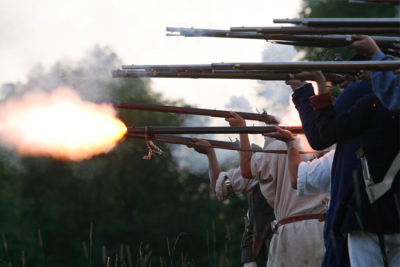HISTORY
Making their mark in American history, the Oneida Indian Nation became the first ally to America when they joined the colonists in their fight for independence during the American Revolutionary War. In 1794, after the victory over the British and many hardships for the Oneidas, George Washington signed the Treaty of Canandaigua recognizing the Oneida Indian Nation as a sovereign entity. The agreement granted federal protection of 300,000 acres.
Oneida Indian Nation homelands originally consisted of more than six million acres stretching from the St. Lawrence River to the Susquehanna River. Oneida villages thrived in and around the present-day communities of Stockbridge, Oneida Castle, Canastota, Oriskany, the city of Oneida and elsewhere in what are now Oneida and Madison counties.
By the early 1900s, illegal state treaties nearly depleted the Oneida Indian Nation of its homeland. The Oneidas did what they had to do to survive. Some moved, some sold their land. The Oneidas had to fight to recover the last 32 acres granted to them. The federal government filed suit in U.S. District Court in 1919 to help the Oneida Indian Nation reclaim this land.
Today, the Oneida Indian Nation has regained more than 18,000 acres of their original homelands – the most they have had recognized sovereignty over since 1824. A slow steady climb and dedicated perseverance has led to a resurgence for the Oneida Indian Nation that today prospers through their many diverse enterprises.
This economic upturn has allowed the Oneida Indian Nation to provide many
programs and services to its Members as well as reinvest in their enterprises and community to become an economic engine in the Central New York region,
as one of the largest employers in the state.
Polly Cooper: Oneida Heroine
The Oneida County Historical Society formally recognized Polly Cooper’s contribution to the American cause during the Revolutionary War by inducting her into its Hall of Fame in 2005. The re [...]
The Battle at Barren Hill
In May of 1778, nearly 50 Oneida troops arrived at Valley Forge, led by 20-year-old Marquis de Lafayette. Gen. George Washington, expecting the British troops to evacuate Philadelphia, put L [...]



